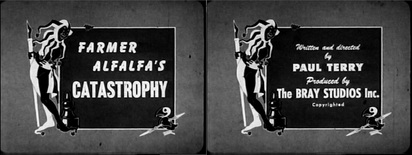Are California’s New Mandatory Water Restrictions an April Fool’s Day Joke?
It’s Time to Pressure Alfalfa Growers to Stop Wasting Water
Now that Governor Brown has ordered the state’s first mandatory water restrictions, it’s important to keep one number in mind: one-sixth. That is the amount of California water that goes to one crop: alfalfa. It’s a pretty low

value crop. And it is not even for human consumption directly; it is used for cattle feed. It could be grown much more easily in the better-watered eastern US, but why should farmers worry about it? They are getting free water based on antiquated water rights law.
It’s great that the Governor is taking these proactive steps:
Cities have to stop watering the median strips that run down the middle of roads. The state will partner with local agencies to remove 50 million square feet of grass — the equivalent of about 1,150 football fields — and replace it with drought-tolerant landscaping.
State agencies will create a temporary rebate program to encourage homeowners to replace water-guzzling appliances with high-efficiency ones. Golf courses, campuses and cemeteries must cut their water use. New developments will have to install drip or microspray systems if they irrigate with drinking water. Water agencies will discourage water waste with higher rates and fees.
But you might notice that agriculture escapes once again. Until and unless someone takes on the powerful Imperial Irrigation District, which owns close to one-third of the state’s water rights, we will not fix this problem. When confronted with this, State Water Board director Felicia Marcus dismissed it as “finger-pointing,” but sometimes finger-pointing is necessary when someone needs to be fingered. And Marcus might still be in denial:
Brown’s order requires agricultural districts in depleted groundwater basins to share data on groundwater use with the state.
“The agricultural community is already being hit very hard,” Marcus said.
For the second year in a row, Central Valley growers without senior water rights are likely to get no supplies from the valley’s big federal irrigation project. Last year farmers idled about 500,000 acres for lack of water, and this year they may be forced to leave even more cropland unplanted.
The community is being hit hard because it has to share data? It’s a fair point about agriculture users without senior water rights, but that is the whole point: it is those with senior water rights that need to be cracked down on. Any agriculture user at this stage that is not using drip irrigation is guilty of waste. The entity that can enforce that is the State Water Resources Control Board. It’s time.

Reader Comments
8 Replies to “Are California’s New Mandatory Water Restrictions an April Fool’s Day Joke?”
Comments are closed.






Dear Jonathan,
California’s exhaustive efforts to reduce carbon dioxide emissions should mitigate the effects of global warming and end the drought. More cuts in carbon dioxide emissions may be the obvious solution to California’s water crisis.
If you’ve got awhile…
Jonathan,
I completely agree. The SWRCB should be taking a much more aggressive stance on waste. They have the authority. They should use it.
One question I have about your post – I assume that the 1/6 for alfalfa statistic comes from a “normal” year? Do you know of any source for how water usage patterns change during a drought? Given that CVP and SWP project contractors are so far getting a 0% allocation, that would seem to imply that the M&I usage becomes more important in percentage terms. But one only ever hears about the 80-20 split and various statistics that seem to come from wet years.
Warm regards,
Michael
(1) It’s hard to police “waste” when beneficial use is all that’s required.
(2) Markets “reduce waste” by moving water to profitable uses.
(3) The splits do indeed change (surface ground; ag urban enviroment) with water conditions. Check out DWR reports
(4) PVID is fallowing alfalfa to sell water to MWD. This old post discusses: http://www.aguanomics.com/2008/04/from-farms-to-cities.html
David —
1) Not sure I agree on that. The SWRCB can prosecute users for waste. See, e.g., Imperial Irrigation District: Alleged Waste and Unreasonable Use of Water, Water Rights Decision Number 1600 (1984). Put another way, if someone is growing alfalfa (still unaccountably a beneficial use, but okay) but doing so without using drip irrigation, the water that is not hitting the plants is being wasted, and thus not beneficial in the first place!
2) Agreed, but we don’t have real water markets in California, which is something of a problem.
3) Will read the blog post. Thanks!
Although I am not one to defend “wasteful irrigation due to antiquated water rights” (I wrote a paper on how to re-shuffle them: http://www.aguanomics.com/2012/12/all-in-auctions-is-published.html), I want to point out that alfalfa is often a PROFITABLE crop, which is why it gets the water in many places, instead of say wine grapes.
In fact, that’s a good sign, as it means that farmers will trade water for money, as happens in Australia’s water markets and CAn happen in California, today. That’s what I discuss here: http://www.aguanomics.com/2015/04/memo-2-for-governor-brown-compensating.html
David said:
“….. farmers will trade water for money…..”
Good point, California farmers should consider bottling their water and selling it to city slickers. One technique to conserve water is to flush toilets only once each day. It may take a while to accustom oneself to this technique, but it sure saves a lot of water, especially if everyone cooperates. Likewise, sanitary sewer treatment plant effluent can be reclaimed and treated to produce potable water, but this also takes a while to accustom oneself (it is basically safe). The citizens of California must aggressively respond to this drought with the same fervor that they fight global warming.
I think it’s important to emphasize that most water trades that are happening now are in effect rentals rather than sales, at least with respect to the water right. Actually trading water rights (or condemning them) would be a much more expensive proposition than the current offer by MET of $800/acre foot.